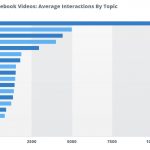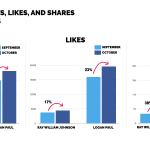What Facebook’s (reported) video chat device could mean for its ad business
With new methods of data collection, Facebook could potentially power ads based on what it hears and sees in users’ physical worlds.
Following a Bloomberg report, we reported Tuesday that Facebook is working on a couple of consumer hardware devices that could have a dramatic impact on the way users — and potentially marketers — engage with the social platform.
According to Bloomberg sources, one product is a standalone voice assistant in the vein of the Amazon Echo and Google Home products. The other is a video chat device with a 13- to 15-inch touchscreen that runs on the Android operating system. Facebook’s goal is to keep people connected to and engaging with the platform. With engagement comes data that can be used for ad targeting. Facebook already collects all kinds of data about users both on Facebook’s own platforms including Instagram and Messenger, as well as around the web with its Like and Share buttons on millions of sites. So what could possibly be next?
Based on this one sentence in the Bloomberg article, we can begin to speculate:
The video chat device will feature a wide-angle camera lens, microphones, and speakers for video conferencing that are all powered by artificial intelligence to boost performance.
Talk of artificial intelligence (AI) capabilities often gets bandied about without any context, details or veracity. We know Facebook has AI capabilities, but how AI will be used to “boost performance” of the communication pieces in the video chat device is the real question, and where Facebook’s capabilities could eventually extend to ad targeting.
Here we do have a few more details, again from the Bloomberg piece:
Facebook is testing a feature that would allow the camera to automatically scan for people in its range and lock onto them, one of the people said. For example, the camera could zoom onto a painting that a child brought home from school to show to a parent away on a business trip.
Facial recognition and environment recognition are baked right into the product. Speculating, potentially the mic and speakers will be able to adjust based on environment and voice and language recognition. If the device recognizes the user’s voice and can scan your surroundings for products and objects, ads served through the Facebook platform could be tailored to what the video chat device sees and hears wherever users experience Facebook-served ads.
That’s a potential data goldmine for a company that, along with Google, already accounts for some 85 percent of digital ad spend growth in the US, according to estimates, and Facebook already rules the display ad market in the US, according to eMarketer.
The privacy implications are substantial, of course, but unlike in the EU, the US has not only been slow to react to calls for digital consumer privacy protections but recently has moved to weaken regulations aimed at protecting consumers’ data privacy.
Facebook has not commented on the devices, much less discussed any potential plans for how it might be used for advertising purposes. But Facebook’s business is an ad-driven one and will continue to be for the foreseeable future. Unless there is meaningful pushback from privacy groups, this new video chat device stands to give Facebook a whole new edge in data collection and ad targeting based on what it knows about users’ physical world.
Marketing Land – Internet Marketing News, Strategies & Tips
(36)















